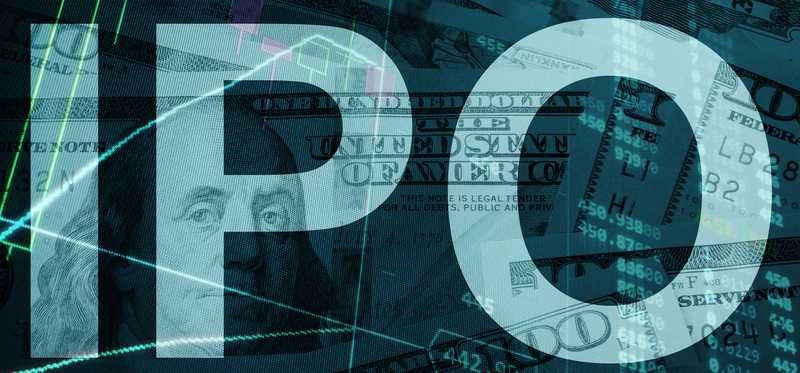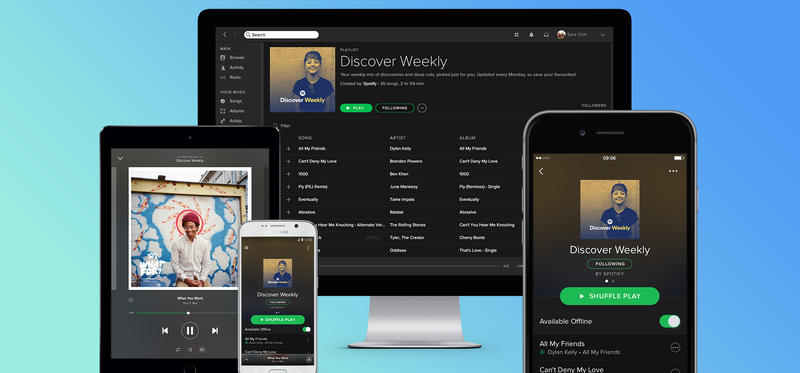Here's How 10 Big IPOs Are Doing Now

Source: Getty Images
1 of
IPOs can boom or (more likely) bust
The IPO, or initial public offering, is the first chance for investors to buy shares of up-and-coming companies with hopes of getting in on the ground floor. It's important to note that while IPOs have occasionally minted millionaires, more often than not, companies struggle following their public debuts. Several studies have found that companies post-IPO tend to trail their already listed peers.
With that in mind, let's look at some high-profile market debuts of the last couple of years and see how those companies are doing today.
ALSO READ: Consumer and Retail IPOs of 2017: Where Are They Now?
Previous
Next

Source: Snapchat
2 of
Snap
Social media and camera app specialist Snap Inc. (NYSE: SNAP) -- parent of photo messaging service Snapchat -- went public in March of last year to much fanfare. The stock quickly rose beyond its offering price of $17, gaining 44% on its first day of trading before beginning a downward trend that continues to this day -- currently down below $13 per share.
Some believed that company had a shot at becoming a social media titan, and while Snapchat continues to be popular with younger users, the stock has been a dud for investors. Several ill-conceived moves like investing in a drone company, the failed launch of camera glasses, and a platform redesign that fell flat with users, caused growth to plummet and investors to run for the exits. The stock is trading at less than its debut price, with no relief in sight.
Previous
Next

Source: Blue Apron
3 of
Blue Apron
Meal kit delivery specialist Blue Apron Holdings, Inc. (NYSE: APRN) was another highly anticipated market debut. The company went public in June of 2017, but the shares hovered near its $10 offering price on its first day of trading, never really gaining traction. The stock has since lost more than two-thirds of its value.
Competition in the meal-kit space from the likes of HelloFresh and Plated, along with concerns about growing grocery delivery options from the likes of Amazon.com (NASDAQ: AMZN) weighed on the company. Stalling growth is also a concern. Prior to its public debut, Blue Apron saw its revenue grow 10-fold over a two-year period, but its inability to retain new subscribers, growing competition, and falling sales have caused sales to plummet.
Previous
Next

Source: Spotify
4 of
Spotify
Music streaming service Spotify (NYSE: SPOT), while technically not an IPO, deserves inclusion in this list. It was one of the most eagerly awaited public debuts of 2018. The company bypassed the typical IPO process and instead chose the direct public offering (DPO), allowing early investors to cash out without issuing new shares. The move also saved the millions in fees typically charged by investment banks to orchestrate the filing.
In early May, the company began trading at about $166 per share, and ended its first day near $149. The stock trades at about $166 today, not moving far from its debut price. While Spotify is currently the worldwide leader, competition in the streaming music space is mounting. Apple (NASDAQ: AAPL) Music and Amazon Music are quickly closing the gap, and Spotify will have to up its game if it wants to maintain that lead.
Previous
Next

Source: Roku
5 of
Roku
Roku (NASDAQ: ROKU) is best known for introducing the first set top box capable of streaming video from Netflix (NASDAQ: NFLX), and one of the most widely anticipated debuts of 2017. The stock was initially priced at $14 per share, but jumped to $23.50 on its first day as a public company. The shares are up 64% since its debut -- making it one of the best performing IPOs of last year.
Roku devices still connect users with popular streaming services like Netflix and Hulu, but the company has since expanded beyond its streaming device roots, and is an aggregator of third-party content and sells advertising on its platform -- the fastest growing and most profitable part of its business. The company is also licensing its operating system to a variety of device makers to expand its ecosystem.
While competition in the streaming space is mounting, Roku continues to carve a successful niche for itself.
Previous
Next

Source: iQiyi
6 of
iQiyi
iQiyi (NASDAQ: IQ) may not be a household name in the U.S., but the company is frequently called "The Netflix of China," and was spun-off by search giant Baidu (NASDAQ: BIDU) in late March. The company is the leader in streaming video in the Middle Kingdom, and its shares initially fell 13% from its $18 offering price. The stock came roaring back, however, and has now gained over 90% since going public.
The enthusiasm for the streaming company began with its first financial report as a public company, with growth accelerating compared to the prior year quarter. The company also announced a key strategic alliance with Chinese online retailer JD.com (NASDAQ: JD) to link their premium benefits programs, allowing users of one to enjoy the benefits of the other. The joint program attracted over 1 million users in the first week alone.
While it's unlikely the stock will continue to grow at its current torrid pace -- and will likely be highly volatile -- there's something to be said for following in Netflix's footsteps.
ALSO READ: Read This Before Investing in Chinese IPOs
Previous
Next

Source: Dropbox
7 of
Dropbox
Personal cloud storage service Dropbox (NASDAQ: DBX) topped $1 billion in revenue for the first time in 2017, but remained unprofitable. The company makes 90% of its revenue from individual consumer subscriptions, and had 500 million registered users prior to its IPO. Dropbox was priced at $21 per share when it debuted in March, jumping to over $28 on its first day as a public company, making it the largest tech IPO since Snap went public last year.
While Dropbox reported solid financial results in its first report as a public company, it hasn't developed much momentum since its debut, currently around $30 per share. Paying customers and average revenue per user grew faster than anticipated, but after its successful IPO, investors likely want to be sure the company will eventually generate a profit.
Previous
Next

Source: Carvana
8 of
Carvana
Carvana (NYSE: CVNA), has been called "The Amazon of cars," and sells autos direct-to-consumers through its website and via automated vending towers in 44 U.S. cities. The company made its market debut in April 2017, priced at $15 per share. After tumbling to about $11 on its first day of trading, the stock has made a remarkable recovery, more than tripling since its dubious debut. What caused this impressive reversal of fortunes?
A string of improving financial reports have propelled the company higher, with units sold and revenue more than doubling year over year, while its per-unit profits has nearly tripled compared to this time last year. The company has added operations in 18 new markets so far in 2018, and plans to serve 57% of the U.S. population by year end.
Carvana is on track to deliver its fifth straight year of triple-digit growth and improving financial metrics make this recent IPO a keeper.
ALSO READ: Should This Move Scare Off Early Carvana Investors?
Previous
Next

Source: Getty Images
9 of
The Trade Desk
Programmatic advertising specialist The Trade Desk (NASDAQ: TTD) went public in September 2016, initially priced at $18 per share, but ended the day up 67%. While investors have since questioned whether a smaller advertising company could compete effectively in an advertising market ruled by titans like Facebook and Alphabet's (NASDAQ: GOOGL) (NASDAQ: GOOG) Google, the company has gradually put those fears to rest, with the stock recently topping $85 per share.
What drove the company's impressive performance? Its most recent financial results tell the tale, with revenue up 61% year over year, and profit that grew 85% compared to the prior year quarter. The company's push into international markets impressed, while mobile video ads grew at triple digits and connected TV ads skyrocketed 2,000% year over year.
With numbers like that, no wonder The Trade Desk has nearly tripled since its debut.
Previous
Next

Source: Getty Images
10 of
MuleSoft
Another company that likely wasn't on your radar was MuleSoft -- unless of course you had an interest in mid-market cloud computing operators. The company helps integrate the data from a variety of disparate sources like apps, databases, and devices into a single application that makes the information more easily accessible, while also better lending the data to analysis.
The stock was initially priced at $17 per share when it debuted in March 2017, and ended the day up 52%. Within the next year, MuleSoft's stock had nearly doubled, though shareholders would soon be in for a shocker -- the company was acquired by Salesforce (NASDAQ: CRM) for about $45 per share just one year after going public.
ALSO READ: MuleSoft Anticipates Huge Growth by 2021
Previous
Next

Source: Getty Images
11 of
Altice USA
Altice USA (NYSE: ATUS) made its debut this time last year as the fourth-largest cable operator in the U.S. The shares were priced at $30, and gained on its first day of trading, before beginning a downward spiral that continues to this day. The company has lost 45% of its value, as fears regarding competition and the future of pay-TV weigh on the stock.
Altice has since fallen to sixth place among its cable brethren and continues to hemorrhage viewers, losing another 30,000 in the first quarter of 2018, though the losses were partially offset by gains in broadband customers.
With the ongoing trends of streaming and cord cutting gaining traction, this company likely has nowhere to go but down.
John Mackey, CEO of Whole Foods Market, an Amazon subsidiary, is a member of The Motley Fool’s board of directors. Suzanne Frey, an executive at Alphabet, is a member of The Motley Fool’s board of directors. Danny Vena owns shares of Alphabet (A shares), Amazon, Apple, Facebook, Netflix, Roku, Inc, and The Trade Desk. The Motley Fool owns shares of and recommends Alphabet (A shares), Alphabet (C shares), Amazon, Apple, Facebook, JD.com, Netflix, Salesforce.com, and The Trade Desk. The Motley Fool has the following options: long January 2020 $150 calls on Apple and short January 2020 $155 calls on Apple. The Motley Fool recommends iQiyi. The Motley Fool has a disclosure policy.
Previous
Next

 Yahoo Finance
Yahoo Finance 